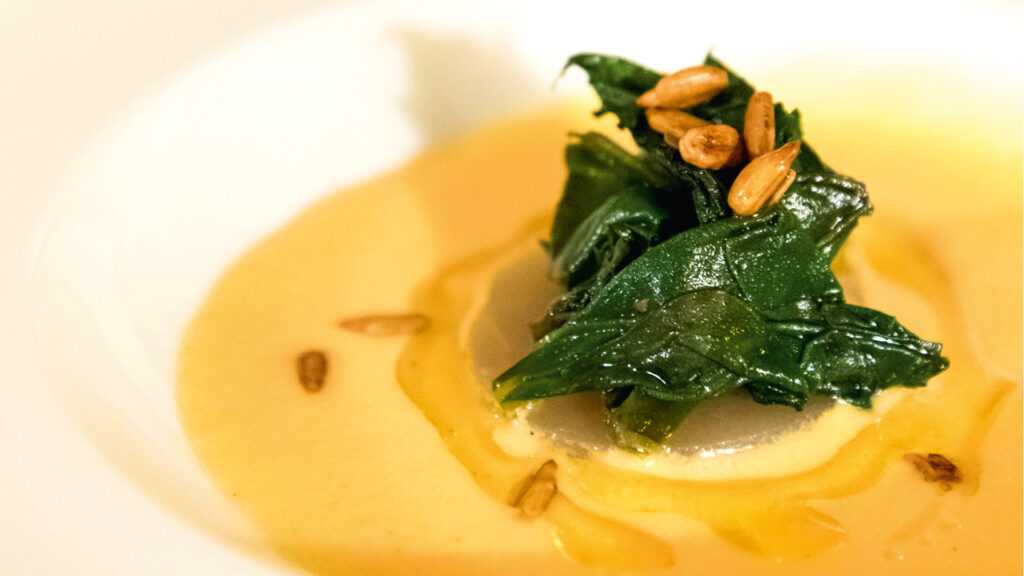Six contemporary food plating techniques that will elevate your dining experience and pique your palate.
By PRACHI JOSHI
If there’s one thing we’ve learnt from popular cooking shows, it’s that presentation is as important as taste. With plating emerging as an art form in itself, more and more chefs are getting creative with colours, textures, and even depth to make a dish visually appealing. Here are six modern food art techniques gaining popularity at restaurants around the world, along with some pointers on how to replicate them at home.
Free Form

Imagine one of Wassily Kandinsky’s abstract paintings translated onto a dish and you’ll get a good idea of what free-form plating is. While the style may appear random, there’s a clear method to it—food placement is carefully thought out and often punctuated by splashes or splatters of sauce to create an interesting ‘painting’ on the plate. This technique is, arguably, the most fun to create and allows you to unleash your artistic side; there are no rules, and the plate is your canvas!
New Nordic

Copenhagen restaurants like Noma and Geranium (currently holding the top position on The World’s 50 Best Restaurants list) put New Nordic cuisine on the global culinary map a few years ago, along with their asymmetrical plating style, wherein food is set to one side of the plate. This form has evolved considerably, and the new(er) Nordic style is all about seemingly effortless elegance. It is still minimalist, but food now occupies more surface area on the plate. In addition, the clever use of garnishes creates a sense of bounty and spotlights foraged produce—an essential element of Nordic cuisine.
Vertical

This simple technique of adding height, not width, can instantly transform a dish into a restaurant-worthy creation. Stacked elements can make the plate look more interesting, giving the meal more depth and making it visually appealing. Layering, however, is not just about stacking similar cuts or shapes on top of each other. Instead, build height into your dish by heaping different ingredients (ideally in odd numbers) of varying shapes and sizes—do pay attention to colours and textures to present a cohesive dish.
Landscape

Taking a cue from landscaped gardens, this style of plating is all about long and low placement of food on the plate. The main ingredients are usually arranged in a linear manner in the centre of the plate, with sauces and garnishes around it. Often, you will see small piles of protein and starch adorned with streaks of sauces or drizzles of purée. When trying this at home, use a squeeze bottle or pastry bag to dot sauce or purée on the plate and a brush to ‘draw’ sauce strokes.
Hide and Seek

Particularly popular with fine-dining restaurants, hide and seek uses layering to conceal the main ingredient—perhaps a thin cracker covering a juicy piece of meat or even thinly sliced veggies that reveal a fish tartare underneath. This technique adds an element of playfulness to the dish, inviting diners on a journey of discovery.
Make sure your layers have contrasting textures to add another level of surprise!
Bathing

As the name suggests, this style involves a liquid element, usually a broth or sauce, with the main ingredient ‘ bathing’ in it. Think chunks of fish bathing in broth or, perhaps, tortellini or other stuffed pasta doused in sauce. The trick is to not dunk the entire dish in the sauce—it’s not a bowl of curry, after all—but serve just enough so that the sauce can be spooned over the main element. This plating style usually goes in tandem with the food-in-a-bowl aesthetic, which is
also very popular currently.
Related: 8 Unique Michelin-Starred Restaurants Across The World



